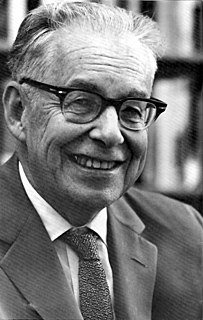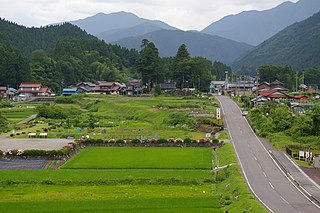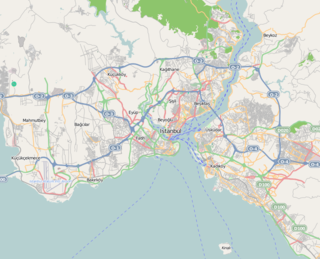Related Research Articles

Seismology is the scientific study of earthquakes and the propagation of elastic waves through the Earth or through other planet-like bodies. The field also includes studies of earthquake environmental effects such as tsunamis as well as diverse seismic sources such as volcanic, tectonic, glacial, fluvial, oceanic, atmospheric, and artificial processes such as explosions. A related field that uses geology to infer information regarding past earthquakes is paleoseismology. A recording of Earth motion as a function of time is called a seismogram. A seismologist is a scientist who does research in seismology.

Charles Francis Richter ; April 26, 1900 – September 30, 1985) was an American seismologist and physicist.
The Lamont–Doherty Earth Observatory (LDEO) is a research unit of The Earth Institute at Columbia University that focuses on the earth sciences. It is located on a 157-acre (64 ha) campus in Palisades, New York, 18 miles (29 km) north of Manhattan on the Hudson River.

Don Lynn Anderson was an American geophysicist who made significant contributions to the understanding of the origin, evolution, structure, and composition of Earth and other planets. An expert in numerous scientific disciplines, Anderson's work combined seismology, solid state physics, geochemistry and petrology to explain how the Earth works. Anderson was best known for his contributions to the understanding of the Earth's deep interior, and more recently, for the plate theory hypothesis that hotspots are the product of plate tectonics rather than narrow plumes emanating from the deep Earth. Anderson was Professor (Emeritus) of Geophysics in the Division of Geological and Planetary Sciences at the California Institute of Technology (Caltech). He received numerous awards from geophysical, geological and astronomical societies. In 1998 he was awarded the Crafoord Prize by the Royal Swedish Academy of Sciences along with Adam Dziewonski. Later that year, Anderson received the National Medal of Science. He held honorary doctorates from Rensselaer Polytechnic Institute and the University of Paris (Sorbonne), and served on numerous university advisory committees, including those at Harvard, Princeton, Yale, University of Chicago, Stanford, University of Paris, Purdue University, and Rice University. Anderson's wide-ranging research resulted in hundreds of published papers in the fields of planetary science, seismology, mineral physics, petrology, geochemistry, tectonics and the philosophy of science.
Seismic magnitude scales are used to describe the overall strength or "size" of an earthquake. These are distinguished from seismic intensity scales that categorize the intensity or severity of ground shaking (quaking) caused by an earthquake at a given location. Magnitudes are usually determined from measurements of an earthquake's seismic waves as recorded on a seismogram. Magnitude scales vary on what aspect of the seismic waves are measured and how they are measured. Different magnitude scales are necessary because of differences in earthquakes, the information available, and the purposes for which the magnitudes are used.

The 1992 Landers earthquake occurred on June 28 with an epicenter near the town of Landers, California. The shock had a moment magnitude of 7.3 and a maximum Mercalli intensity of IX (Violent).
The Mackay School of Earth Sciences and Engineering is a specialized school within the University of Nevada, Reno. It is named after the Mackay family, benefactors of the university by Clarence and John Mackay.
Masayuki Kikuchi(菊地 正幸) was a Japanese seismologist. He was famous for real-time seismology.

The 1891 Mino–Owari earthquake struck the former Japanese provinces of Mino and Owari in the Nōbi Plain in the early morning of October 28 with a surface wave magnitude of 8.0. The event, also referred to as the Nōbi earthquake, the Great Gifu earthquake, or the Great Nōbi earthquake, is the largest known inland earthquake to have occurred in the Japanese archipelago.
The Reno earthquakes of 2008, also known as the "Mogul-Somersett earthquake sequence", occurred in or near the western Reno, Nevada, suburbs of Mogul and Somersett. The earthquake swarm began in February 2008, but the first significant quake of the series occurred on April 15, 2008, registering a 3.6 magnitude. On April 24, 2008, two quakes in the same area registered 4.1 and 4.2. On April 25, 2008, the quake of largest magnitude occurred, registering 4.7 on the Richter scale and causing damage in the immediate area around the epicenter, including destroying 200 feet of a wooden flume supplying water from the Highland Ditch, also known as the Highland Ditch flume. The flume carried up to 50 million US gallons (190,000 m3) a day from the Highland Ditch to Reno's Chalk Bluff Water Treatment Facility and another 5 million US gallons (19,000 m3) to area irrigation users.
The Richter scale – also called the Richter magnitude scale or Richter's magnitude scale – is a measure of the strength of earthquakes, developed by Charles Francis Richter and presented in his landmark 1935 paper, where he called it the "magnitude scale". This was later revised and renamed the local magnitude scale, denoted as ML or ML .

The 1915 Pleasant Valley earthquake occurred at 22:53:21 on October 2 in north-central Nevada. With a moment magnitude of 6.8 and a maximum Mercalli intensity of X (Extreme), it was the strongest earthquake ever recorded in the state.

Paul G. Richards is an English-born, American seismologist who has made fundamental contributions to the theory of seismic wave link propagation and in methods to understand how the recorded shapes of seismic waves are affected by processes of diffraction, attenuation and scattering. He is the Mellon Professor of the Natural Sciences at Lamont-Doherty Earth Observatory of Columbia University.

This list of 20th-century earthquakes is a global list of notable earthquakes that occurred in the 20th century. After 1900 most earthquakes have some degree of instrumental records and this means that the locations and magnitudes are more reliable than for earlier events. To prevent this list becoming unmanageable, only those of magnitude 6 and above are included unless they are notable for some other reason.

The 1978 Thessaloniki earthquake occurred on 20 June at 23:03 local time. The shock registered 6.5 on the moment magnitude scale, had a maximum Mercalli intensity of VIII (Severe), and was felt throughout northern Greece, Yugoslavia and Bulgaria. It was the largest event in the area since the 1932 Ierissos earthquake.
The Caltech Seismological Laboratory is an arm of the Division of Geological and Planetary Sciences of the California Institute of Technology. Known as "the Seismo Lab", it has been a world center for seismology research since the 1920s, and was for many decades a go-to source for rapid commentary to the press on large earthquakes.

Kandilli Earthquake Museum, or more formally Museum of Kandilli Observatory and Earthquake Research Institut, is a museum devoted mainly to seismology and earthquake science in Turkey. It is situated within the campus of Kandilli Observatory in Kandilli neighborhood of Üsküdar district in Istanbul.
Harry Oscar Wood was an American seismologist who made several significant contributions in the field of seismology in the early twentieth-century. Following the 1906 earthquake in San Francisco, California, Wood expanded his background of geology and mineralogy and his career took a change of direction into the field of seismology. In the 1920s he co-developed the torsion seismometer, a device tuned to detect short-period seismic waves that are associated with local earthquakes. In 1931 Wood, along with another seismologist, redeveloped and updated the Mercalli intensity scale, a seismic intensity scale that is still in use as a primary means of rating an earthquake's effects.

The 1838 San Andreas earthquake is believed to be a rupture along the northern part of the San Andreas Fault in June 1838. It affected approximately 100 km of the fault, from the San Francisco Peninsula to the Santa Cruz Mountains. It was a strong earthquake, with an estimated moment magnitude of 6.8 to 7.2, making it one of the largest known earthquakes in California. The region was lightly populated at the time, although structural damage was reported in San Francisco, Oakland, and Monterey. It is unknown whether there were fatalities. Based on geological sampling, the fault created approximately 1.5 meters of slip.
The Advanced National Seismic System (ANSS) is a collaboration of the U.S. Geological Survey (USGS) and regional, state, and academic partners that collects and analyzes data on significant earthquakes to provide near real-time information to emergency responders and officials, the news media, and the public. Such information is used to anticipate the likely severity and extent of damage, and to guide decisions on the responses needed.